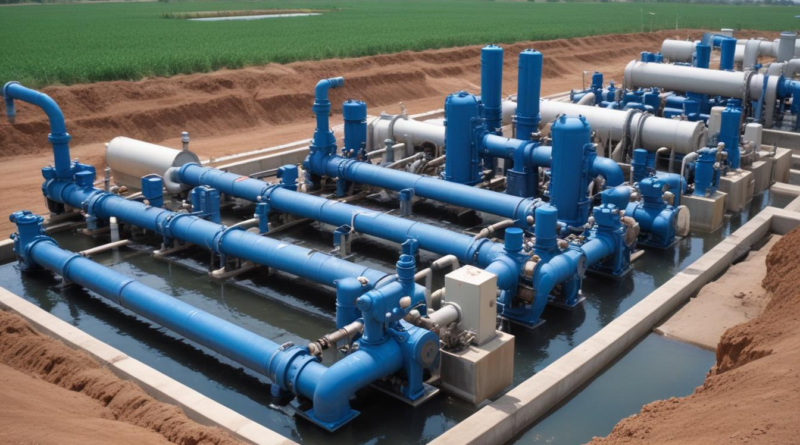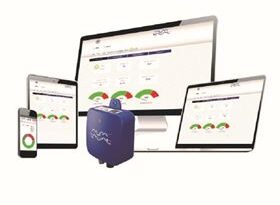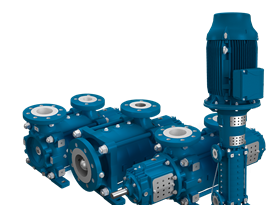the role of pumps in water distribution systems
Pumps play a crucial role in the seamless operation of water distribution systems. They are integral to maintaining the necessary pressure and ensuring the continuous flow of water from treatment facilities to end-users. The functionality of these systems hinges on the efficient performance of water distribution pumps, which overcome challenges such as elevation changes, long distances, and frictional losses within the pipeline network.
The primary functions of pumps in water distribution systems include:
- Pressurization: Ensuring consistent water pressure throughout the network to provide reliable service to consumers.
- Flow Regulation: Managing the rate of water flow to balance supply and demand, preventing system overloads and ensuring equitable distribution.
- Energy Efficiency: Optimizing pump operations to reduce energy consumption and operational costs while maintaining system performance.
- System Reliability: Providing backup capabilities during peak demand periods or in case of equipment failures, thereby enhancing the overall resilience of the water supply system.
In large-scale water distribution networks, pumps are often organized into a hierarchical structure to address varying demand zones and geographical challenges. Effective coordination and control of these pumps are essential for optimizing performance and minimizing disruptions. The integration of multiple pumps allows for flexibility in operations, enabling the system to adapt to changes in demand and supply conditions seamlessly.
A well-designed water distribution pump system typically comprises the following components:
| Component | Function |
|---|---|
| Pump Stations | House the pumps and associated equipment, acting as nodes that facilitate the movement of water through the distribution network. |
| Control Systems | Monitor and regulate pump operations based on real-time data to ensure optimal performance and respond to changing conditions. |
| Valves and Piping | Direct the flow of water, control pressure levels, and manage the routing of water throughout the distribution system. |
By effectively incorporating pumps into the water distribution infrastructure, utilities can achieve a reliable and efficient supply of water, meeting the needs of residential, commercial, and industrial users alike. The strategic deployment and management of water distribution pumps are fundamental to the sustainability and effectiveness of modern water supply systems.
types of water pumps
Water distribution systems rely on a variety of pump types, each designed to meet specific operational requirements and environmental conditions. Understanding the different water distribution pumps available is essential for selecting the appropriate pump to ensure system efficiency and reliability. The primary categories of water pumps include centrifugal pumps, positive displacement pumps, and specialty pumps, each with distinct characteristics and applications.
- Centrifugal Pumps: These are the most commonly used pumps in water distribution systems due to their simplicity and efficiency. They operate by converting rotational kinetic energy, typically from an electric motor, into hydrodynamic energy of the fluid flow. Centrifugal pumps are ideal for applications requiring continuous flow and are effective in handling large volumes of water with relatively low viscosity.
- Positive Displacement Pumps: Unlike centrifugal pumps, positive displacement pumps move water by trapping a fixed amount and forcing it through the discharge pipe. They are suitable for applications requiring high pressure and are effective in handling viscous fluids. These pumps are often used in scenarios where precise flow control is necessary.
- Submersible Pumps: Designed to operate underwater, submersible pumps are commonly used in wells and boreholes. They are encapsulated to prevent water from entering the motor, allowing them to function efficiently in submerged conditions.
- Turbine Pumps: These pumps are specialized centrifugal pumps designed for large-scale water distribution systems. They are highly efficient and capable of handling high flow rates and pressures, making them suitable for municipal water supply networks.
- Booster Pumps: Used to increase water pressure within the distribution system, booster pumps ensure consistent pressure levels, especially in areas with variable demand or elevated terrains.
A comprehensive understanding of these pump types facilitates the selection of the most appropriate technology based on the specific needs of the water distribution system. The following table highlights key features and typical applications of each pump type:
| Pump Type | Key Features | Typical Applications |
|---|---|---|
| Centrifugal Pumps | Simple design, high flow rates, low maintenance | Municipal water supply, irrigation systems, HVAC systems |
| Positive Displacement Pumps | High pressure, precise flow control, handles viscous fluids | Industrial processes, water treatment plants, chemical dosing |
| Submersible Pumps | Operates underwater, compact design, energy-efficient | Wells, boreholes, sewage systems |
| Turbine Pumps | High efficiency, large capacity, robust construction | Large municipal water systems, power plants, industrial water supply |
| Booster Pumps | Increases system pressure, variable speed options | Residential high-rise buildings, commercial complexes, water towers |
Each pump type offers unique advantages that can be leveraged to enhance the functionality and efficiency of water distribution systems. Selecting the appropriate pump involves evaluating factors such as flow rate requirements, pressure levels, energy consumption, and the specific characteristics of the water being transported. By carefully considering these elements, water distribution systems can achieve optimal performance, reliability, and sustainability.
selection and sizing of pumps
Selecting and sizing the appropriate pumps is a critical step in designing an efficient and reliable water distribution system. Proper selection ensures that the pump can meet the system’s demand under varying conditions while optimizing energy usage and minimizing operational costs. The sizing process involves several key considerations, including flow rate requirements, pressure head, system characteristics, and environmental factors.
Flow Rate Requirements
Determining the required flow rate is the foundational step in pump selection. The flow rate, typically measured in gallons per minute (GPM) or liters per second (L/s), depends on the peak demand periods and the overall water consumption patterns of the service area. Accurately estimating the peak flow ensures that the pump can handle the maximum expected load without compromising system performance.
Pressure Head
The pressure head, expressed in feet or meters, represents the total dynamic head the pump must overcome to deliver water to its destination. This includes the static head (the elevation difference between the source and the delivery point), friction losses within the piping network, and any additional pressure requirements for specific applications. Accurately calculating the total head is essential for selecting a pump that can provide sufficient pressure to maintain desired flow rates throughout the distribution system.
System Characteristics
Understanding the system’s characteristics, such as pipe diameter, length, and material, is vital for determining the frictional losses and overall efficiency of the water distribution network. Additionally, factors like the number of bends, valves, and fittings influence the pump’s performance. Conducting a comprehensive analysis of the system’s layout helps in selecting a pump that can operate efficiently under the given conditions.
Energy Efficiency
Energy consumption is a significant operational cost in water distribution systems. Selecting energy-efficient pumps can lead to substantial cost savings over the pump’s lifespan. Pumps with variable frequency drives (VFDs) offer adjustable speed settings, allowing them to operate at optimal efficiency under varying demand conditions. Evaluating the pump’s energy performance curve ensures that it operates efficiently across the expected range of flow rates and head requirements.
Environmental Factors
Environmental conditions, such as temperature, humidity, and potential exposure to corrosive substances, can impact pump performance and longevity. Selecting pumps made from materials that can withstand the specific environmental challenges of the installation site is crucial for ensuring reliable operation and minimizing maintenance requirements.
Reliability and Maintenance
The reliability of the pump is paramount for maintaining continuous water supply. Selecting pumps from reputable manufacturers with a history of dependable performance and robust build quality reduces the risk of unexpected failures. Additionally, considering the ease of maintenance and availability of spare parts can enhance the pump’s long-term reliability and reduce downtime.
The following table outlines the key factors involved in the selection and sizing process of water distribution pumps:
| Factor | Description | Considerations |
|---|---|---|
| Flow Rate | Volume of water the pump needs to deliver | Peak demand, average usage, future growth |
| Pressure Head | Total dynamic head the pump must overcome | Static head, friction losses, application-specific pressure |
| System Characteristics | Physical attributes of the distribution network | Pipe size, length, material, bends, valves |
| Energy Efficiency | Operational energy consumption | Energy performance curves, VFD compatibility |
| Environmental Factors | External conditions affecting pump operation | Temperature, humidity, corrosive elements |
| Reliability and Maintenance | Dependability and ease of upkeep | Manufacturer reputation, maintenance requirements, spare parts availability |
Selection Process
The pump selection process typically involves the following steps:
- Define System Requirements: Establish the necessary flow rates, pressure heads, and operational parameters based on system analysis.
- Evaluate Pump Types: Determine the most suitable pump type (e.g., centrifugal, positive displacement) that aligns with the system’s operational needs.
- Analyze Pump Curves: Use pump performance curves to match the pump’s flow and head capabilities with the system requirements, ensuring efficient operation within the desired range.
- Consider Energy Efficiency: Select pumps with high-efficiency ratings and consider incorporating energy-saving technologies such as VFDs.
- Assess Environmental Compatibility: Ensure that the pump materials and design are appropriate for the environmental conditions of the installation site.
- Review Reliability and Maintenance Needs: Choose pumps that offer reliable performance and are easy to maintain, considering long-term operational costs.
- Finalize Selection: Based on the evaluation, select the pump that best meets all criteria, ensuring optimal functionality and performance within the water distribution system.
Proper selection and sizing of water distribution pumps are essential for the efficient and reliable operation of water distribution systems. By meticulously evaluating system requirements, pump characteristics, and operational factors, utilities can ensure that their pump installations deliver consistent performance, optimize energy usage, and provide sustainable water supply to end-users.
maintenance and operational best practices
 Regular maintenance and adherence to operational best practices are essential to ensure the longevity, efficiency, and reliability of water distribution pumps. Proactive maintenance not only minimizes the risk of unexpected failures but also optimizes the functionality of the entire water distribution system. Implementing a comprehensive maintenance strategy involves routine inspections, timely repairs, and the adoption of best operational practices tailored to the specific requirements of water distribution pumps.
Regular maintenance and adherence to operational best practices are essential to ensure the longevity, efficiency, and reliability of water distribution pumps. Proactive maintenance not only minimizes the risk of unexpected failures but also optimizes the functionality of the entire water distribution system. Implementing a comprehensive maintenance strategy involves routine inspections, timely repairs, and the adoption of best operational practices tailored to the specific requirements of water distribution pumps.
Preventive Maintenance
Preventive maintenance is a systematic approach aimed at preventing pump failures before they occur. Key components of preventive maintenance include:
- Scheduled Inspections: Regularly inspecting pump components such as seals, bearings, impellers, and motors to identify signs of wear or damage.
- Lubrication: Ensuring that all moving parts are properly lubricated to reduce friction and prevent overheating.
- Alignment Checks: Verifying that the pump and motor shafts are correctly aligned to avoid undue stress and vibration.
- Cooling System Maintenance: Maintaining cooling systems, including cooling towers and fans, to prevent overheating of pump motors.
- Electrical System Inspection: Examining electrical connections, wiring, and control systems to ensure safe and efficient operation.
Predictive Maintenance
Predictive maintenance utilizes data-driven techniques to anticipate and address potential issues before they lead to pump failures. Common predictive maintenance practices include:
- Vibration Analysis: Monitoring vibration levels to detect imbalances, misalignments, or bearing failures.
- Thermography: Using infrared cameras to identify hotspots in electrical and mechanical components, indicating potential problems.
- Oil Analysis: Analyzing lubricant samples for contaminants and wear particles that signal internal wear or contamination.
- Performance Monitoring: Continuously tracking pump performance metrics such as flow rate, pressure, and power consumption to detect deviations from normal operating conditions.
Operational Best Practices
Adopting best operational practices enhances the efficiency and reliability of water distribution pumps. Key practices include:
- Proper Start-Up and Shut-Down Procedures: Following manufacturer guidelines for starting and stopping pumps to prevent water hammer and mechanical stress.
- Load Management: Operating pumps within their designed load ranges to avoid overloading and excessive wear.
- Energy Management: Utilizing variable frequency drives (VFDs) and energy-efficient motors to optimize energy usage based on demand.
- Redundancy Planning: Implementing redundant pump systems to ensure continuous operation during maintenance or in the event of a pump failure.
- Training and Documentation: Providing ongoing training for maintenance personnel and maintaining detailed records of maintenance activities and pump performance.
Maintenance Schedule
Establishing a structured maintenance schedule is crucial for maintaining the optimal performance of water distribution pumps. The following table outlines a typical maintenance schedule:
| Maintenance Activity | Frequency | Description |
|---|---|---|
| Daily Inspections | Daily | Check for unusual noises, vibrations, and visible leaks. Ensure gauges and indicators are functioning correctly. |
| Lubrication | Weekly | Lubricate bearings and other moving parts as specified by the manufacturer. |
| Alignment Verification | Monthly | Confirm that pump and motor shafts remain properly aligned and make adjustments if necessary. |
| Comprehensive Inspection | Quarterly | Conduct a detailed inspection of all pump components, including seals, impellers, and electrical connections. |
| Performance Testing | Biannually | Evaluate pump performance against baseline metrics to identify any deviations or inefficiencies. |
| Annual Overhaul | Annually | Perform a full maintenance overhaul, replacing worn parts and updating components as needed. |
Common Maintenance Challenges and Solutions
Water distribution systems often face specific maintenance challenges that require targeted solutions:
- Corrosion: Exposure to corrosive water can degrade pump components. Utilizing corrosion-resistant materials and applying protective coatings can mitigate this issue.
- Biofouling: The growth of biological organisms can obstruct pump operation. Implementing regular cleaning and employing biocides can control biofouling.
- Energy Variability: Fluctuations in energy supply can impact pump performance. Installing surge protectors and uninterruptible power supplies (UPS) can stabilize energy input.
- Access Limitations: Pumps located in confined or hazardous areas may be challenging to service. Designing accessible pump stations and using remote monitoring technologies can address access issues.
Documentation and Record-Keeping
Maintaining detailed records of all maintenance activities, inspections, and performance metrics is vital for managing water distribution pumps effectively. Proper documentation facilitates:
- Trend Analysis: Identifying patterns in pump performance and maintenance needs to inform future maintenance strategies.
- Regulatory Compliance: Ensuring adherence to industry standards and regulatory requirements through accurate record-keeping.
- Asset Management: Tracking the lifecycle and condition of pump components to plan for replacements and upgrades.
Training and Personnel
Ensuring that maintenance personnel are well-trained is critical for the effective upkeep of water distribution pumps. Key aspects of training include:
- Technical Skills: Providing comprehensive training on pump operation, maintenance procedures, and troubleshooting techniques.
- Safety Protocols: Educating staff on safety procedures to prevent accidents and ensure a safe working environment.
- Continuous Education: Encouraging ongoing education and certification to keep personnel updated on the latest technologies and best practices.
By implementing robust maintenance and operational best practices, water distribution systems can achieve enhanced reliability, extend the lifespan of water distribution pumps, and ensure the consistent delivery of water to end-users. Proactive maintenance strategies, combined with effective operational management, play a pivotal role in sustaining the efficiency and resilience of water distribution infrastructures.
advancements and future trends
Recent advancements in pump technology are significantly enhancing the functionality and efficiency of water distribution systems. These innovations are driven by the need for greater sustainability, improved energy efficiency, and enhanced system reliability. Emerging trends are shaping the future landscape of water distribution pumps, ensuring they meet the evolving demands of modern infrastructure.
Smart Pump Technology
Smart pump technology integrates advanced sensors and control systems to optimize pump operations in real-time. These intelligent systems can automatically adjust pump speeds based on current demand, leading to significant energy savings and improved system performance. Key features include:
- Real-Time Monitoring: Continuous tracking of pump performance metrics such as flow rate, pressure, and energy consumption.
- Automated Control: Dynamic adjustments to pump operations based on real-time data, ensuring optimal performance under varying conditions.
- Remote Management: Ability to manage and control pumps remotely, reducing the need for on-site personnel and enabling quick response to issues.
Integration with the Internet of Things (IoT)
The integration of IoT technology into water distribution pumps facilitates seamless communication and data exchange between pumps and centralized control systems. This connectivity allows for enhanced data collection and analysis, leading to better decision-making and system optimization. Benefits include:
- Enhanced Data Analytics: Leveraging large datasets to identify patterns and optimize pump operations.
- Predictive Maintenance: Utilizing IoT sensors to predict potential failures before they occur, reducing downtime and maintenance costs.
- Improved Asset Management: Real-time tracking of pump performance and condition to inform maintenance schedules and replacement planning.
Energy-Efficient Designs
Energy efficiency remains a critical focus in the development of new pump technologies. Advances in motor design, materials, and pump configurations contribute to reduced energy consumption and lower operational costs. Key developments include:
- Variable Frequency Drives (VFDs): Allowing pumps to operate at variable speeds, matching demand and minimizing energy usage.
- High-Efficiency Motors: Enhanced motor designs that provide greater power output with less energy input.
- Optimized Hydraulic Designs: Improving pump efficiency by reducing friction losses and enhancing flow dynamics.
Renewable Energy Integration
Incorporating renewable energy sources into pump operations is becoming increasingly important for sustainable water distribution systems. Solar-powered and wind-powered pumps offer eco-friendly alternatives to traditional energy sources, particularly in remote or off-grid locations. Advantages include:
- Reduced Carbon Footprint: Lowering greenhouse gas emissions by utilizing clean energy sources.
- Energy Independence: Providing reliable pump operation in areas with limited access to the electrical grid.
- Cost Savings: Decreasing long-term energy costs through the use of renewable energy.
Advanced Materials and Manufacturing
The use of advanced materials and innovative manufacturing techniques is enhancing the durability and performance of water distribution pumps. These improvements lead to longer lifespans and reduced maintenance requirements. Notable advancements include:
- Corrosion-Resistant Alloys: Extending pump life in corrosive environments by using materials that resist degradation.
- 3D Printing: Enabling the production of complex pump components with greater precision and reduced lead times.
- Composite Materials: Offering lightweight yet strong alternatives to traditional pump construction materials.
Adaptive Control Systems
Adaptive control systems utilize artificial intelligence and machine learning algorithms to continuously learn and optimize pump operations. These systems enhance the responsiveness and efficiency of water distribution networks by:
- Optimizing Pump Schedules: Automatically adjusting pump start and stop times based on usage patterns and demand forecasts.
- Minimizing Wear and Tear: Reducing mechanical stress on pumps by maintaining optimal operating conditions.
- Enhancing System Resilience: Quickly adapting to changes in the distribution network, such as leaks or blockages, to maintain consistent water supply.
Data Analytics and Machine Learning
The application of data analytics and machine learning in pump management is revolutionizing the way water distribution systems operate. By analyzing vast amounts of data, these technologies enable:
- Predictive Maintenance: Anticipating failures and scheduling maintenance before issues arise.
- Performance Optimization: Continuously improving pump efficiency through data-driven adjustments.
- Demand Forecasting: Accurately predicting water usage trends to better manage pump operations and energy consumption.
Future Trends
Looking ahead, several trends are expected to further transform the landscape of water distribution pumps:
| Trend | Description |
|---|---|
| Enhanced Automation | Greater use of automated systems to manage pump operations with minimal human intervention. |
| Hybrid Systems | Combining multiple energy sources and pump types for increased flexibility and reliability. |
| Sustainable Practices | Emphasizing eco-friendly materials and processes in pump manufacturing and operation. |
| Integration with Smart Grids | Linking pump systems with smart electrical grids to optimize energy usage and distribution. |
| Blockchain for Data Security | Using blockchain technology to secure and verify data transactions within pump management systems. |
These advancements and future trends highlight the role of innovation in enhancing the efficiency, reliability, and sustainability of water distribution systems. As technology continues to evolve, water distribution pumps will become increasingly sophisticated, providing critical support to meet the growing demands of urbanization and climate resilience.




